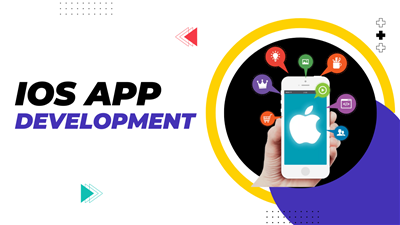
Swift Programming Course For Student
Welcome to our Swift Programming course! This course is designed for students who want to learn how to create apps for iOS devices like iPhones and iPads. Whether you're new to programming or have some coding experience, this course will guide you step-by-step through the process of building your own apps using Swift.
Why Learn Swift?
Swift is the powerful and intuitive programming language developed by Apple for building apps on iOS, macOS, watchOS, and tvOS. Learning Swift opens up a world of opportunities, allowing you to create apps for millions of Apple devices around the globe. Swift is designed to be easy to learn and fun to use, making it a great choice for beginners and experienced programmers alike.
What You Will Learn
Our Swift Programming course covers everything you need to know to start building your own iOS apps:
1. Introduction to Swift
- What is Swift? Learn about Swift and why it's used for iOS development.
- Setting Up Your Environment: Install and set up Xcode, the main tool for developing iOS apps.
- Your First Swift Program: Write and run your first Swift program to get familiar with the basics.
2. Basics of Swift Programming
- Variables and Constants: Learn how to store and use data in your programs.
- Data Types: Understand different types of data such as strings, numbers, and booleans.
- Control Flow: Use if statements, loops, and switch cases to control the flow of your program.
3. Functions and Closures
- Functions: Learn how to create and use functions to organize your code.
- Closures: Understand how to use closures to capture and store references to variables and constants.
4. Object-Oriented Programming
- Classes and Structs: Learn how to create and use classes and structs to build complex data structures.
- Inheritance: Understand how to create subclasses and use inheritance to reuse code.
- Protocols: Learn how to define and use protocols to specify behavior for classes, structs, and enums.
5. Building User Interfaces
- Interface Builder: Use Xcode's Interface Builder to design your app's user interface.
- UI Components: Add buttons, labels, text fields, and other UI components to your app.
- Auto Layout: Make sure your app's interface looks good on all screen sizes using Auto Layout.
6. Working with Data
- Data Storage: Learn how to save and retrieve data using UserDefaults and Core Data.
- Networking: Fetch data from the internet and display it in your app.
- JSON Parsing: Understand how to work with JSON data and APIs.
7. Advanced Swift Features
- Error Handling: Learn how to handle errors gracefully in your programs.
- Concurrency: Understand how to write concurrent code using Grand Central Dispatch (GCD).
- SwiftUI: Get introduced to SwiftUI, Apple's modern framework for building user interfaces.
8. Testing and Debugging
- Unit Testing: Learn how to write tests to ensure your code works correctly.
- Debugging: Discover how to find and fix bugs in your code using Xcode's debugging tools.
9. Publishing Your App
- App Store Guidelines: Understand the guidelines for publishing your app on the Apple App Store.
- Preparing for Release: Learn the steps to prepare your app for submission, including creating app icons and screenshots.
- Submitting Your App: Submit your app for review and learn how to respond to feedback from Apple.
How You Will Learn
Our course is designed to be interactive and practical:
- Step-by-Step Lessons: Follow clear, easy-to-understand instructions to learn each concept.
- Hands-On Projects: Apply what you’ve learned by working on real projects and building your own apps.
- Expert Guidance: Learn from experienced instructors who provide insights and support.
- Community Support: Join a community of learners to ask questions, share ideas, and get feedback.
Conclusion
By the end of this course, you'll have a solid foundation in Swift programming and the skills to create and publish your own iOS apps. Whether you want to develop apps for fun, solve real-world problems, or start a career in tech, this course will give you the tools and confidence you need. Join us and start your journey into Swift programming and iOS app development today!

